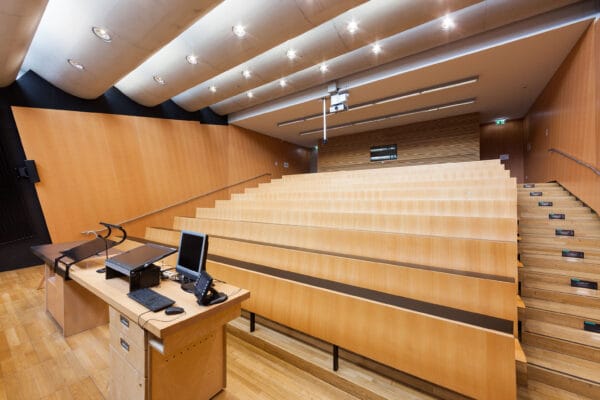
NAME:
SOWI - HS 2
BUILDING:
SOWI
FLOOR:
0
TYPE:
Lecture Hall
CAPACITY:
80
ACCESS:
Only Participants
EQUIPMENT:
Beamer, PC, WLAN (Eduroam), Overhead, Flipchart, Blackboard, Sound System, Handicapped Accessible, Light Installation
Innsbruck, an urban area nestled in a mountainous region, presents unique challenges for atmospheric research due to its complex orography. This inherent complexity complicates the accurate quantification of emission sources, particularly greenhouse gases such as methane. Recognizing the importance of methane in climate change and its associated uncertainties in alpine environments, the Innsbruck Atmospheric Observatory (IAO) at the University of Innsbruck has implemented a long-term monitoring strategy employing the eddy covariance measurement technique. As a Top-Down approach, these measurements provide direct emission estimates that complement and validate conventional Bottom-Up emission inventories, which often rely on assumptions about activity data and emission factors.
Our multi-year dataset, combining continuous observations of methane, carbon dioxide, and nitrogen oxides with campaign-based non-methane volatile organic compound (NMVOC) flux measurements, enables a detailed characterization of urban methane emissions. We identify pre-flush operations and inefficient gas furnaces as the dominant methane sources, with fluxes showing a strong correlation with ethane and a negative temperature dependence. The observed ethane-to-methane ratio (~5%) aligns with the composition of the regional gas supply.
The estimated 20-year global warming potential (GWP) of methane emissions from the residential, commercial, and public sectors could be as high as 20–30% relative to CO₂ emissions, underlining the significance of unburned methane as a climate-relevant pollutant. Our findings highlight the potential for immediate emission reductions through the transition from gas furnaces to heat pumps, offering a clear path for mitigating methane emissions in urban areas. In this regard, the study emphasizes the value of long-term flux measurements in alpine urban environments for improving regional climate models and guiding effective mitigation strategies.

We and use cookies and other tracking technologies to improve your experience on our website. We may store and/or access information on a device and process personal data, such as your IP address and browsing data, for personalised advertising and content, advertising and content measurement, audience research and services development. Additionally, we may utilize precise geolocation data and identification through device scanning.
Please note that your consent will be valid across all our subdomains. You can change or withdraw your consent at any time by clicking the “Consent Preferences” button at the bottom of your screen. We respect your choices and are committed to providing you with a transparent and secure browsing experience.